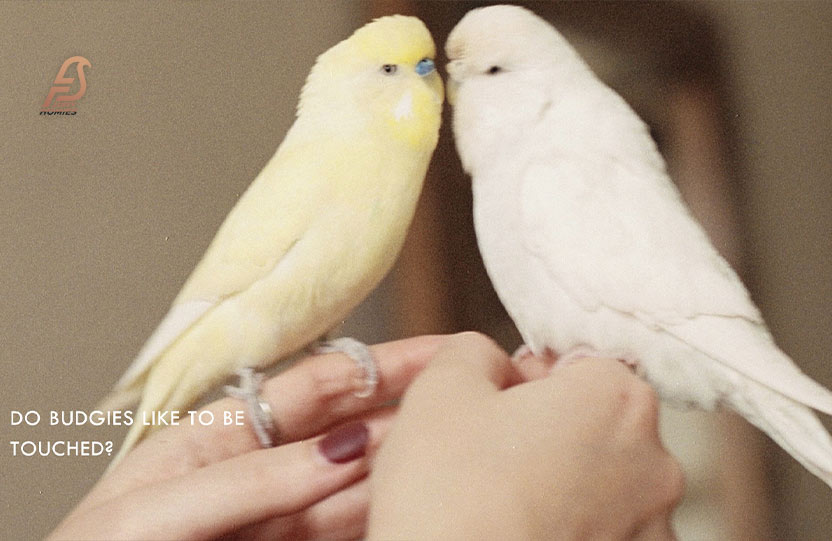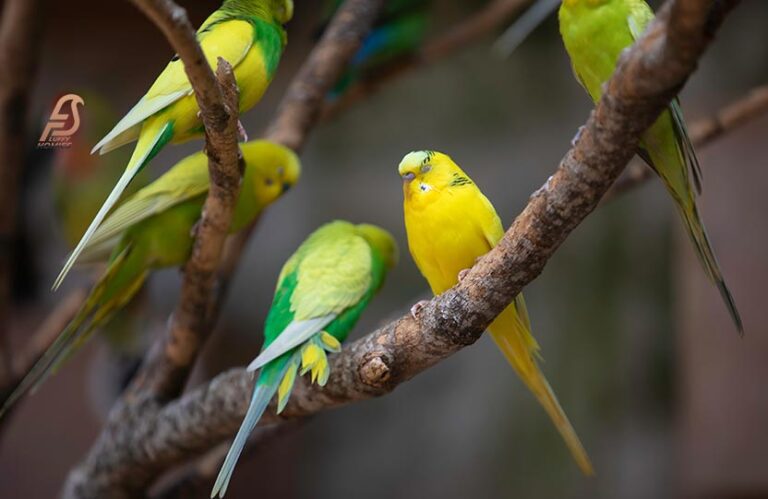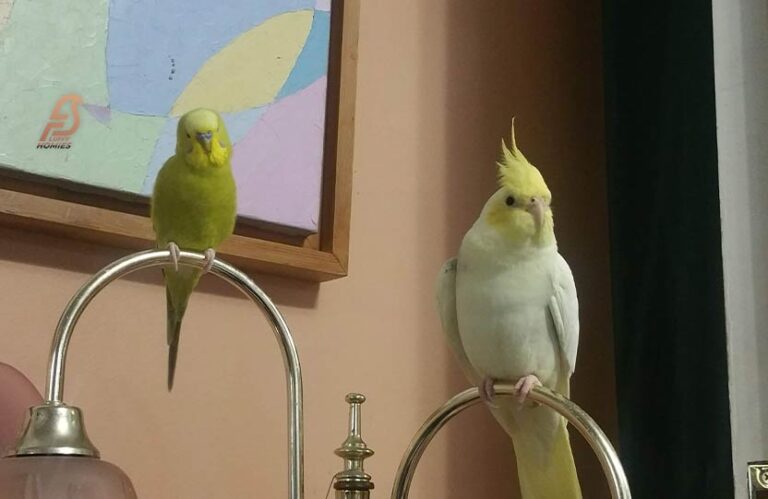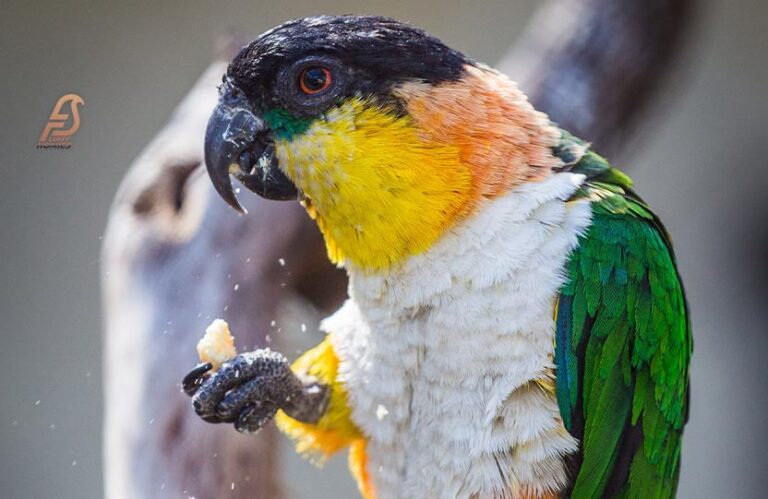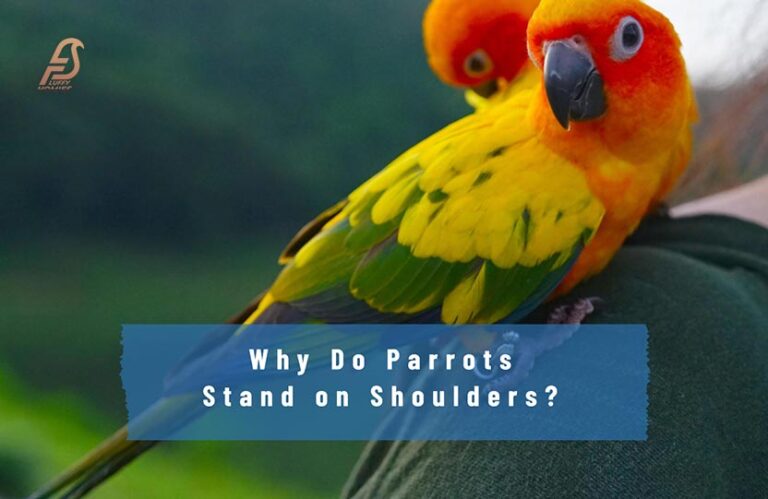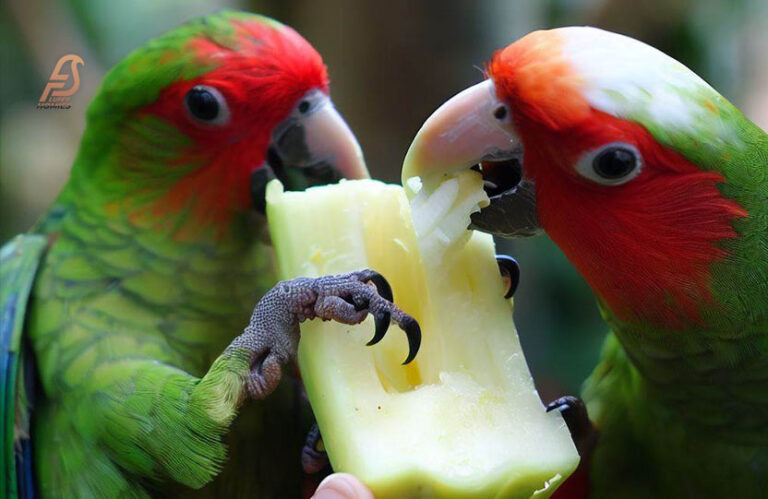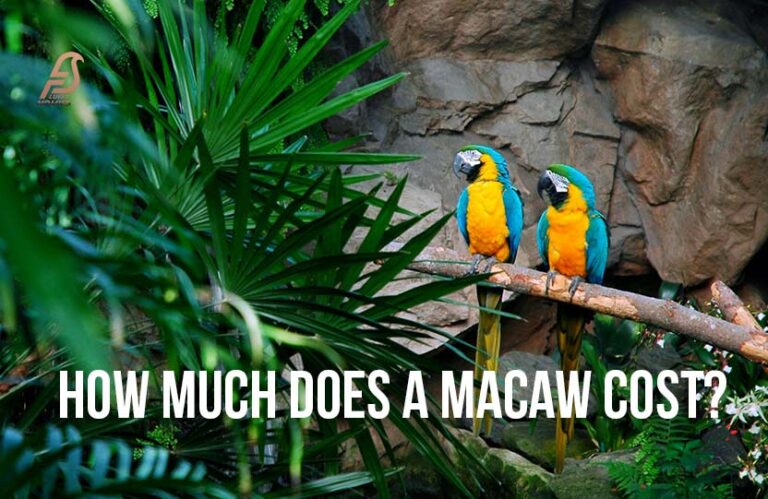Where Do Budgies Love to Be Touched? (Budgie Bonding 2023)
You might be interested in your budgies’ preferences for physical contact as a pet owner. Do budgies prefer to keep their private space or do they enjoy being touched?
Do budgies enjoy being touched? is an intriguing question that will be explored in this article. Where do budgies enjoy being petted?
In their natural habitats, budgies have a long history of social interaction and behavior, which can shed light on their pet preferences.
We can discover the affectionate nature of these adorable birds by comprehending their innate tendencies and forging a strong bond of trust.
Join us as we explore the fascinating world of budgies and their connection to touch, whether you’re a new pet owner or just curious about their behaviors.
Do Budgies Like to Be Touched?
One prominent aspect of budgie behavior is their social bonding through mutual grooming and preening.
New bird’s owners don’t know much about their precious birds such they don’t have any idea why is my budgie getting overweight, do birds like to climb, and more.
Budgies show their affection and reinforce social bonds by engaging in gentle beak-to-feather contact.
This grooming behavior not only helps them maintain the cleanliness of their feathers but also strengthens their social ties within the flock.
When budgies preen each other, they exhibit a remarkable level of trust and cooperation. They carefully navigate the feathers of their flock mates, removing dirt, debris, and parasites.
This behavior not only contributes to their overall hygiene but also fosters a sense of connection and well-being among the group.
Comfort
Just like humans, budgies have their personal space in which they are comfortable. By know how many budgies should you get in a cage you can ensure their comfort a little bit.
Respecting their need for personal space is crucial in building a trusting and positive relationship with these feathered companions.
When you bring a budgie into your home, they may initially be cautious of their new surroundings. It’s essential to give them time to adjust and acclimate to their new environment before attempting any physical contact.
Rushing into touch without establishing trust can lead to stress and apprehension in budgies.
Trust
Building trust with your budgie is a gradual process that requires patience and understanding. Birds love to stand on shoulders if they have trust on you.
Spend time near their cage, speaking softly and engaging in activities that they enjoy, such as offering their favorite treats or toys. Allow them to observe and become familiar with your presence.
As your budgie begins to feel more comfortable, you may notice signs of trust, such as the chirping or interacting with you through the bars of their cage.
These are positive indications that they are becoming more open to human interaction. However, it’s important to remember that trust is earned over time and cannot be rushed.
Environment
By providing a safe and nurturing environment, along with consistent positive experiences, you can gradually build trust with your budgie.
This foundation of trust forms the basis for a budgie’s willingness to engage in physical touch and enjoy human companionship.
Due to bad environment they avoid physical contact and budgies may starve themselves.
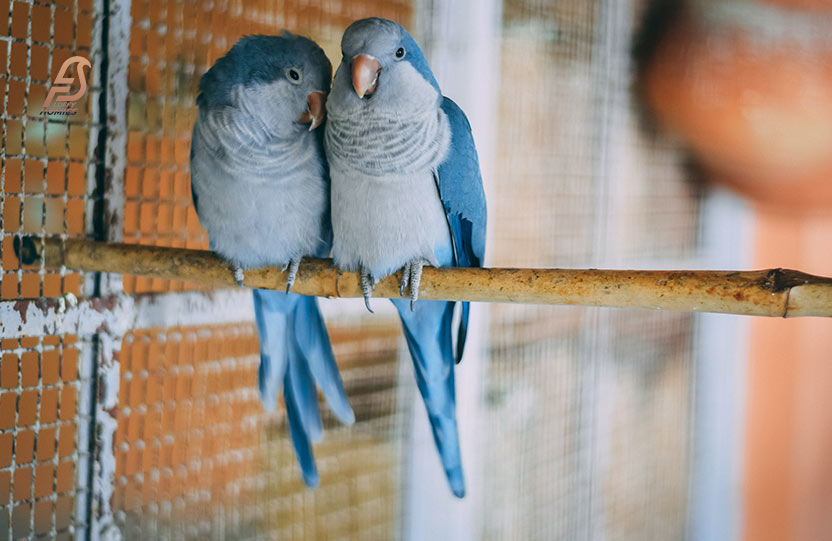
Where Do Budgies Like to Be Touched?
When it comes to physical touch, budgies have preferred areas that they may enjoy being touched
Understanding these areas can help you provide positive and enjoyable experiences for your budgie during bonding sessions.
Head
One of the common areas where budgies like to be touched is the head. Gently stroking their head feathers with your fingertip can be a soothing and enjoyable experience for them.
Some budgies may even lean into the touch, indicating their pleasure and trust.
Neck
Another favored spot is the neck region. Lightly scratching or gently rubbing the back of their neck, just below their head, can elicit positive responses from budgies.
This area is often a focus of their preening behavior, so mimicking this grooming gesture can be highly appreciated by your budgie.
Cheeks
Cheeks are another sensitive area that budgies may enjoy being touched. Softly caressing the feathers around their cheeks can evoke a sense of comfort and intimacy.
However, it’s important to be cautious and attentive to their response, as some budgies may have varying preferences regarding touch on their cheeks.
Beak
Budgies may also enjoy having their beak gently stroked or lightly tapped. However, always be cautious and avoid any pressure that might cause discomfort.
Remember that each budgie is unique, and individual preferences for touch may differ.
Some budgies may not enjoy being touched at all, while others may have specific areas they prefer over others. It’s important to observe their reactions and adjust your approach accordingly.
Also Read: Why Do Budgies Talk in Their Sleep?
Where Should You Not Touch Budgies?
While budgies may have preferred areas for touch, there are certain areas you should avoid touching to ensure their comfort and well-being.
Being mindful of these sensitive areas can help prevent any potential discomfort or stress for your budgie.
Wings
Budgies’ wings are delicate and essential for their flight. Avoid touching or grabbing their wings, as it can cause injury or distress.
Restraining their wings can also make them feel trapped and frightened. If you touch their wings then birds will puffed up their feathers against you.
Tail
The tail feathers of budgies are crucial for their balance and maneuverability. Sometimes budgies are in a bad mood and most of parakeets won’t drink water.
In this case if you are Pulling or tugging their tail feathers can cause pain and damage. Respect their tail area and refrain from touching it.
Feet and Legs
Budgies use their feet and legs for perching, climbing, and maintaining their balance. Avoid grasping or squeezing their feet, as it can be uncomfortable and potentially injurious. Allow them to maintain control over their own feet and legs.
Eyes and Beak
Budgies have sensitive eyes and beaks. It’s best to avoid touching or poking these areas, as it can cause discomfort and potentially harm their delicate structures.
If you are touching the restricted areas then your bird nibble on you and may bite you.
Abdomen and Vent
The abdominal area of budgies is sensitive, and touching it can be uncomfortable or even painful for them. Similarly, the vent area is delicate and should be left untouched. These areas are best left to their own grooming and personal care.
When to Touch a Budgie?
Physical touch encounters with your budgie are best when timed correctly, leading to a positive outcome. For your feathered friend, stress may result if you touch them prematurely or at unwanted moments.
Approaching You
Before touching your budgie, trust and familiarity must first be established otherwise birds bite you hard. Settling into their new surroundings, allow them to become comfortable with your presence.
Weeks or days may elapse during which the individual budgie’s character plays a role in determining how long the adjustment phase lasts.
Relaxed Body Language
Body language and behavior observation can reveal when your budgie is ready.
Indicators such as curiosity, approachability, and relaxed body posture may lead to physical touch being accepted. Respecting their pace, trust is something that grows incrementally.
During Calm and Quiet Moments
During more tranquil moments, connect with your budgie through physical touch. Approaching them while startled, scared, or engaged in an important task is not recommended.
A relaxed state and receptivity to your presence are key moments to initiate touch.
Time
When your budgie tends to become more active and alert, consider the time of day. Touching during particular times can boost the likelihood of receiving a favorable response. Adjust according to individual preferences, always be mindful.
If you pick the appropriate moment and respect your budgie’s comfort level, you may create a mutually satisfying and enjoyable encounter for both parties.
Also Read: Can A Cockatiel See in The Dark?
How to Touch a Budgie?
When it comes to touching a budgie, it’s crucial to approach them with gentleness, patience, and respect for their comfort.
Here are some guidelines on how to touch a budgie in a way that promotes a positive and enjoyable experience for both of you:
Start Slowly
Begin by offering your hand or finger near their cage and allow them to approach you on their terms.
Avoid making sudden movements or reaching them abruptly. Let them observe and become comfortable with your hand’s presence.
Respect Their Boundaries
Pay attention to your budgie’s body language and reactions. If they show signs of discomfort or try to move away, it’s essential to back off and give them space. Respect their boundaries and adjust your approach accordingly.
Use Gentle Strokes
When your budgie is comfortable and receptive, you can try gentle strokes on their preferred areas such as the head or neck.
Use the pad of your finger to lightly stroke their feathers in the direction they naturally lie. Avoid applying excessive pressure or pulling on their feathers.
Follow Their Lead
Allow your budgie to guide the interaction. Observe their reactions and adjust your touch accordingly. If they lean into the touch or display signs of enjoyment, you can continue with gentle strokes.
If they show signs of discomfort or move away, it’s important to respect their cues and discontinue the touch.
Offer Rewards
Positive reinforcement can help create positive associations with touch. Offer your budgie their favorite treats or verbal praise after a successful touch session.
This can reinforce the bond and encourage them to view touch as a positive experience.
Why Budgies Don’t Like It When You Touch Them?
While some budgies may enjoy physical touch and form strong bonds with their human caregivers, it’s important to recognize that not all budgies appreciate being touched.
Understanding the reasons behind their aversion to touch can help foster a respectful and positive relationship with your budgie.
Instinctual Fear
Budgies have the instinct to be cautious of potential threats and predators. They may view sudden or forceful touch as a potential danger, triggering fear and anxiety.
This instinctual response can make them uncomfortable and resistant to physical contact.
Lack of Trust or Socialization
Budgies that have not been properly socialized or have had negative experiences with humans in the past may develop a mistrust towards the touch and birds start to hate you.
Building trust and gradually introducing positive experiences is crucial in helping them overcome their apprehensions.
Individual Personality
Budgies, like humans, have individual personalities and preferences. Some budgies may simply have a more independent nature and prefer minimal physical contact.
It’s important to respect their individuality and find alternative ways to bond and interact that they find enjoyable.
Sensitivity to Touch
Budgies have highly sensitive feathers and skin. Some budgies may find certain types of touch or specific areas more uncomfortable or irritating. Pay attention to their reactions and avoid areas or techniques that cause discomfort.
Lack of Control
Budgies are small and delicate creatures, and being touched can make them feel vulnerable and out of control. They may prefer to maintain their sense of independence and control over their bodies.
It’s crucial to remember that forcing or persisting with touch when a budgie is uncomfortable can damage the trust and bond between you.
Also Read: Why Does My Budgie Have Cold Feet?
Do Budgies Like It When You Kiss Them?
Between humans, kissing is a common display of affection, yet when it comes to budgies and their response to kisses can vary.
Gentle kisses require careful handling when interacting with certain budgies. It’s crucial to consider the following factors when determining whether to kiss your budgie:
Individual Preference
Depending on their individual personalities, budgies may differ in their preferences for physical contact, including kisses.
While some budgies find gentle head or cheek kisses enjoyable, others might find them uncomfortable or unsettling. Accordingly, adjust your behavior to their reactions.
Hygiene and Health
Your mouth’s bacteria or germs can be transferred to your budgie through kisses. Highly sensitive to infections, budgies call for good oral hygiene before engaging in close proximity.
If you have eaten something that could harm the person you are kissing, it is best to avoid it.
Body Language
Body language and reactions to kisses, carefully observe your budgie’s responses. Comfort may be indicated by shifting locations, puffed-up feathers, or displays of anxiousness or agitation.
Boundaries should always be respected, and unwelcome kisses should be avoided.
Alternatives to Kisses
Kisses aren’t the only way; there are other methods of displaying affection if your budgie doesn’t fancy them. Effective means of showing affection include offering gentle pets, scratches, and treats on preferred areas.
Also Read: Why Are My Budgies Feet Hot?
Do Budgies Like to Be Grabbed?
No, budgies do not appreciate being grabbed or handled roughly. Sudden, forceful movements or attempts to grab them can cause fear, stress, and potential injury. Always approach your budgie with care, using gentle and respectful touch.
Do Budgie Birds Like to Be Held?
While some budgies may tolerate being held, it is not a natural behavior for them. Budgies have a strong instinct to fly and explore their environment.
Holding them for extended periods can cause stress and discomfort. Focus on building trust and providing a safe environment instead of forcing them to be held.
How Do I Know If My Budgie Is Scared?
It’s crucial to understand your budgie’s body language to identify signs of fear or discomfort. Common indicators that your budgie may be scared include:
Flapping Wings Rapidly: Rapid wing flapping often indicates fear or a desire to escape from a situation.
Crouching or Hiding: If your budgie crouches low on a perch or seeks hiding spots, it is likely to feel threatened or frightened.
Vocalizations of Alarm: Loud squawking, screeching, or chirping in a distressed manner can be a clear sign of fear or discomfort.
Also Read: Why Is My Budgies Cere Changing Color?
How to Pet a Budgie for the First Time?
Petting a budgie for the first time can be an exciting and special moment. However, it’s important to approach this initial interaction with care and consideration for your budgie’s comfort.
Here are some steps to follow when petting a budgie for the first time:
Create a Calm Environment
Choose a quiet and calm environment for the initial interaction. Reduce noise and distractions to help your budgie feel secure and at ease.
Wash Your Hands
Before attempting to touch your budgie, wash your hands thoroughly with mild, unscented soap. This helps remove any residue or scents that could be potentially irritating or unpleasant for your budgie.
Observe Their Body Language
Pay close attention to your budgie’s body language. Signs of relaxation, such as fluffed-up feathers, closed eyes, or a calm posture, indicate that they may be receptive to interaction.
If your budgie appears agitated, flaps its wings rapidly, or displays signs of stress, it’s best to postpone the interaction for another time.
Offer a Perch or Finger
Extend a finger or a small perch near your budgie and allow them to approach it on their terms. Avoid making sudden movements or trying to touch them directly. Allow them to become familiar with your presence and establish trust.
Slow and Gentle Strokes
Once your budgie is comfortable perching on your finger or a nearby perch, you can attempt gentle strokes on their preferred areas such as the head or neck.
Use light, slow motions and observe their reaction. If they lean into the touch or appear relaxed, you can continue with gentle strokes. If they show signs of discomfort or move away, it’s best to respect their boundaries and give them space.
Keep the Interaction Brief
For the first few interactions, it’s important to keep the petting sessions brief. Gradually increase the duration of the interactions as your budgie becomes more accustomed to touch.
Always prioritize their comfort and end the interaction if they show signs of stress or discomfort.
Positive Reinforcement
After the interaction, offer your budgie a small treat or words of praise to reinforce positive associations with the experience. This helps them associate touch with positive outcomes and builds trust over time.
Conclusion — Do Budgies Like to Be Touched?
Whether or not budgies, like to be touched, depends on their personalities, level of trust, and comfort.
Building a strong bond with your budgie through patience, positive reinforcement, and respecting their boundaries is key to understanding their preferences.
Remember to observe your budgie’s body language and always prioritize their well-being and comfort.
Ultimately, a healthy and fulfilling relationship with your budgie goes beyond physical touch and is built on trust, love, and mutual respect.
Also Read: Is My Budgie Molting or Sick?
FAQs — Do Budgies Like to Be Touched?
Where should you not pet a budgie?
Do not pet a budgie on its back, as it may interpret as a sign of aggression or discomfort. Stick to gently stroking its head or neck.
Are there any risks associated with touching budgies?
Improper handling or forceful touch can cause stress, fear, or injury to budgies. It’s important to approach them slowly, respect their boundaries, and observe their comfort levels. Always prioritize their well-being and seek professional advice if needed.
Do budgies like being picked up?
Some budgies may tolerate being picked up, but most prefer not to be handled in that way. They generally prefer social interaction and being approached on their terms.
Do budgies like to be sprayed with water?
Many budgies enjoy being sprayed with water as it simulates a natural bathing experience. However, it’s important to introduce water gradually and observe their response to ensure they are comfortable with it.
